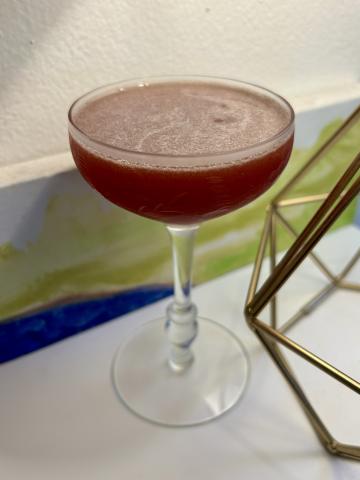Fair Winds & Following Seas
Stir, rocks, lemon twist garnish.
I made this with 1 tsp of homemade lemongrass & ginger bitters instead of the commercial bitters:
8 oz 151-proof grain alcohol
4 large stalks lemongrass, chopped
6-8 cm ginger, finely chopped
1 small green mango, chopped
2 heads of long pepper
5 grams wormwood
Steep for 2 weeks, strain and bottle.
- Fleur du Mal — Pisco, Dimmi, Amaro Meletti, Lemon juice
- Last Day in Paradise — Amaro, Crème de Banane, Demerara Rum, Rhum Agricole, Lime juice
- Trinidad Special — Bitters, Añejo rum, Falernum, Lime juice, Simple syrup
- Onyx — Virgin Islands Rum, Amer Picon, Balsamic Vinegar, Cherry syrup
- Last Bird — Jamaican rum, Campari, Herbal liqueur, Pineapple juice, Lime juice
